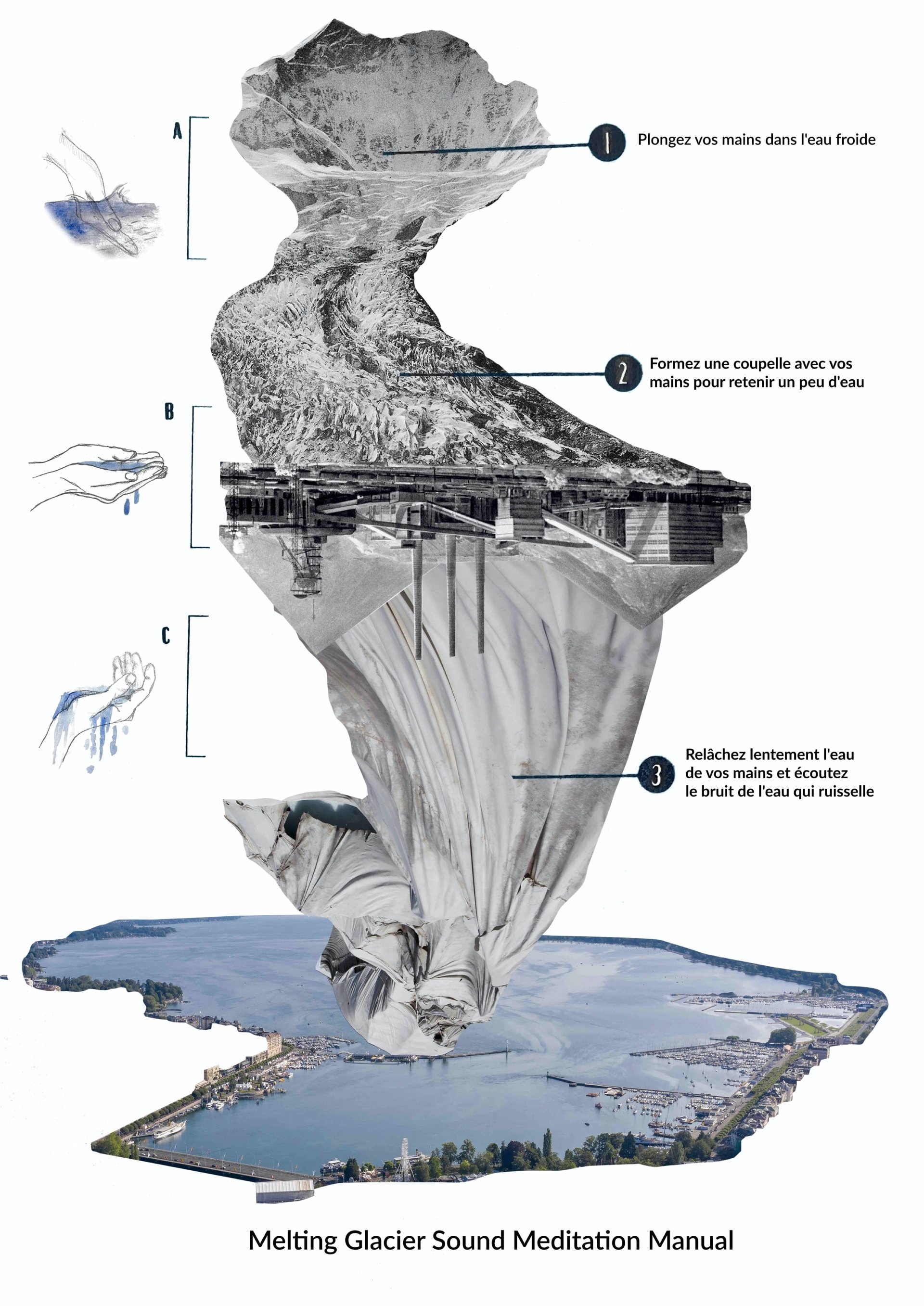Diana Lelonek
Diana Lelonek (1988) lives and works in Warsaw. She explores the relationship between humans and other species, using photography, living matter, and found objects to create an integrative body of work, often at the interface of art and science. As critical responses to the processes of overproduction, unlimited growth and a utilitarian, anthropocentric vision of the environment, her projects reveal nature in action, regaining power in the face of human activity. In her poster, she stages a collage of images depicting, from top to bottom, a glacier, a coal-fired power station, and sheets that have been used in an attempt to halt the melting of the ice and the lake.
Fun Fact
Glaciers contain many microorganisms that have adapted to particularly harsh living conditions. Despite the cold, these glaciers are an important source of water for these organisms. Some are found on the surface, while others develop at the interface between ice and rock. These include bacteria, viruses, but also freshwater algae and certain fungi, including species of the genus Penicillium. All these organisms constitute a real connected ecosystem; some will assimilate minerals such as sulfur and iron, then make them available to others within various biochemical reactions and thus form a real cascade of life.
Call to Action
Cold water baths are known for their benefits, despite the lack of relevant scientific studies. They are said to increase the production of noradrenaline and dopamine and have positive effects on circulation and oxygenation. Relatively popular in Nordic countries, these cold water baths are also becoming popular in other countries further south. In addition to public winter swimming events, everyone can go to their nearest river or lake and enjoy the facilities that remain open and accessible even in winter. You can also skip the hot water during your next shower!
Riddle
With a scenario where the earth warms by +3 degrees by 2100, how many percent of the current glaciers in the Alps will still exist? A) 80%, phew, there will still be enough to ski on! B) 50%, there will at least still be some water in reserve C) 20 to 30%, most of them will be nothing more than memories
Instruction
